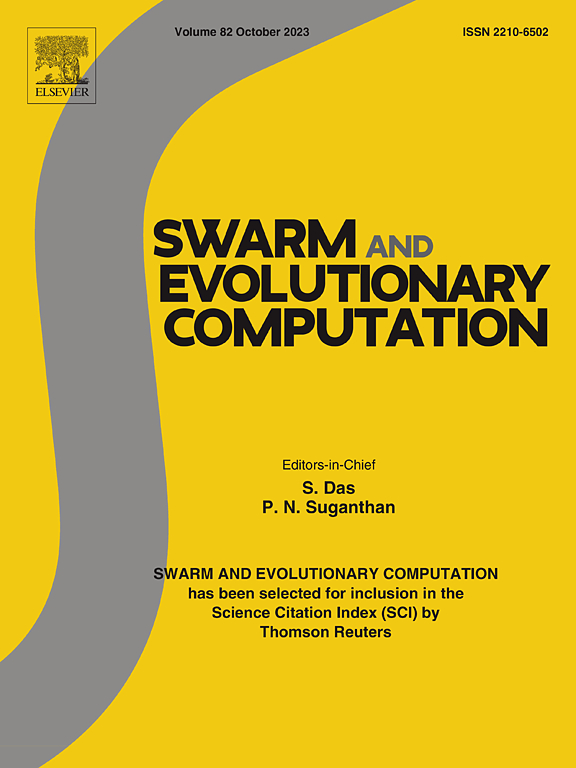Decomposition-based dual-population evolutionary algorithm for constrained multi-objective problem
IF 8.2
1区 计算机科学
Q1 COMPUTER SCIENCE, ARTIFICIAL INTELLIGENCE
引用次数: 0
Abstract
Constrained multi-objective optimization problems require optimizing and solving multiple objectives while satisfying the constraints. However, in the process of solving this problem, some constraints created infeasible obstacle regions, which led to the neglect of a portion of the constrained Pareto front (CPF). In order to solve this problem, A novel decomposition-based dual-population constrained multi-objective evolutionary algorithm (DD-CMOEA) is proposed. DD-CMOEA adopts a dual population collaborative search strategy, which can quickly find CPF. In the first stage, DD-CMOEA conducts dual population searches on CPF and unconstrained Pareto front (UPF) separately. During the search process, sub-population A uses unconstrained global exploration to obtain information that helps sub-population B jump through infeasible obstacle areas. In the second stage, when the convergence of the sub-population searching for UPF stagnates, the angle-based constraint advantage principle is used for reverse search. It ensures that the searched CPF solution set can be evenly distributed throughout the entire search space. The experimental results on three standard benchmark function suites show that DD-CMOEA outperforms the other six state-of-the-art algorithms in solving constrained multi-objective optimization problems.
求助全文
约1分钟内获得全文
求助全文
来源期刊

Swarm and Evolutionary Computation
COMPUTER SCIENCE, ARTIFICIAL INTELLIGENCEC-COMPUTER SCIENCE, THEORY & METHODS
CiteScore
16.00
自引率
12.00%
发文量
169
期刊介绍:
Swarm and Evolutionary Computation is a pioneering peer-reviewed journal focused on the latest research and advancements in nature-inspired intelligent computation using swarm and evolutionary algorithms. It covers theoretical, experimental, and practical aspects of these paradigms and their hybrids, promoting interdisciplinary research. The journal prioritizes the publication of high-quality, original articles that push the boundaries of evolutionary computation and swarm intelligence. Additionally, it welcomes survey papers on current topics and novel applications. Topics of interest include but are not limited to: Genetic Algorithms, and Genetic Programming, Evolution Strategies, and Evolutionary Programming, Differential Evolution, Artificial Immune Systems, Particle Swarms, Ant Colony, Bacterial Foraging, Artificial Bees, Fireflies Algorithm, Harmony Search, Artificial Life, Digital Organisms, Estimation of Distribution Algorithms, Stochastic Diffusion Search, Quantum Computing, Nano Computing, Membrane Computing, Human-centric Computing, Hybridization of Algorithms, Memetic Computing, Autonomic Computing, Self-organizing systems, Combinatorial, Discrete, Binary, Constrained, Multi-objective, Multi-modal, Dynamic, and Large-scale Optimization.
 求助内容:
求助内容: 应助结果提醒方式:
应助结果提醒方式:


